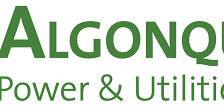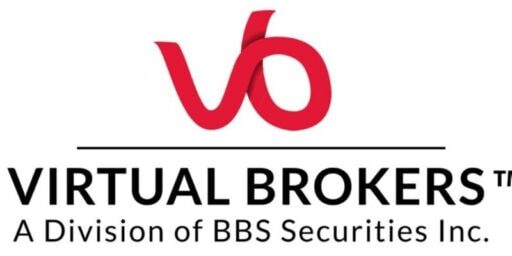Homeowners: Create Cash-Flow and Tax Write-Offs Using a Debt Conversion Strategy
Do you own a home? Do you make regular mortgage payments? There’s a good chance you’ve already spent tens of thousands paying mortgage interest – debt that is not a tax write-off. But what if you could turn your mortgage loan into a tax-deductible debt?
Canadians are only allowed to deduct the interest paid on borrowed money if the money is used for the purpose of earning income. Since our principal residence is not used for this reason, mortgage interest is not considered tax-deductible. However, homeowners can create significant tax savings by turning their non-deductible mortgage into tax-deductible debt — and this can be achieved through debt conversion strategies.
The Burden of Not Deductible Mortgage Debt
Home equity is the portion of your home’s value that is yours, debt-free. In other words, it’s the difference between the market value of your home – what you could sell it for, today – and the debt owed on the property.
As a Canadian homeowner, every time you make a mortgage payment you increase the equity in your home but a portion of that payment also goes towards servicing the debt. That portion of your mortgage payment is the interest on the debt. For many Canadians, the cost of mortgage interest can add up to tens of thousands each year – an expense that isn’t a tax write-off and must be paid in after-tax earnings.
Creating a Mortgage Interest Tax Deduction: An Overview of the Debt Conversion Strategy
Why would you bother setting up a debt conversion strategy? Because the strategy lets you increase your net worth and cash flow, simultaneously. This is particularly appealing for any Canadian homeowner with a mortgage who is struggling to pay off debt and build an investment portfolio.
The strategy involves making regular mortgage payments, re-borrowing the principal that was just repaid and then investing in a portfolio of income-producing assets.
Under Canadian tax rules, interest paid on money borrowed to earn an income is tax-deductible (it’s also why the interest paid on your principal residence mortgage is not tax-deductible). When set up properly, a debt conversion strategy allows Canadian homeowners to convert non-tax-deductible mortgage interest into tax-deductible investment interest.
Not only does this strategy help with wealth accumulation (by building an investment portfolio) but it helps you pay off debt faster (there’s an incentive for paying down your mortgage) all while paying less tax, each year.
The good news is a debt conversion strategy is pretty straightforward:
- Make your regular mortgage payment.
- Reborrow the new equity
- Reinvest in income-producing investments
- Increase tax savings by deducting the interest paid on the investment loans.
How To Set Up a Debt Conversion Strategy
To set up the debt conversion strategy, you must first set up a readvanceable mortgage.
A readvanceable mortgage lets you reborrow the principal (not the interest) you pay off each month.
You will need to separate this readvanceable mortgage into two separate components:
- Your regular mortgage, with its non-deductible interest, and
- A home equity line of credit (HELOC).
Once set up, any money used to repay the principal mortgage debt will automatically be available to reborrow using the HELOC.
To illustrate, let’s take an example from my new book, House Poor No More (released late in 2021 and still an Amazon bestseller):
- Let’s assume you make a $2,500 mortgage payment and $1,250 is used to pay interest and the other $1,250 is used to pay down the principal loan,
- Using the debt conversion strategy, as soon as you make that mortgage payment you would have $1,250 available to borrow from your home equity line of credit.
- Re-borrow $1,250 and invest in a portfolio of income-producing assets, such as ETFs.
- Claim the interest paid on the borrowed HELOC funds for tax savings. (You could then use these tax savings to repay more of your mortgage loan, which frees up more investment funds, or use the funds to boost registered account savings.)
- Repeat.
By doing this, you convert the non-deductible mortgage debt into a tax-deductible investment loan. Repeat these steps each month and not only will you be paying off your mortgage debt but also saving for your future.
Repeat these steps monthly and yearly until your mortgage is completely tax-deductible. At this point, you can continue to hold a tax-deductible investment loan or opt to cash out and payout, but still, keep your invested earnings.
Follow the Rules
To maximize the benefits of the debt conversion strategy it’s important to follow a few rules.
- All borrowed funds (from the HELOC) must be used to earn income. If you co-mingle expenses — for instance, use $1,000 to buy stock and $250 to pay for new blinds for the family room — you run the risk of the Canada Revenue Agency rejecting your entire tax-deductible claim. The idea is to keep a clear paper trail; the tax professionals need to see that all funds were used for investment purposes only.
- Discuss prepayment privileges with your lender, first. Quite often, a motivated homeowner who sees the benefit of this strategy will realize the advantage of paying down the mortgage debt in order to make room on the HELOC. However, homeowners can get into serious trouble if they don’t first find out when and how they can make pre-payments towards their mortgage debt without incurring penalties. Talk to your lender about the minimum and maximum prepayment amounts you can make against the loan, before incurring fees. Then figure out a strategy that works best for your budget.
- No registered accounts. The Canadian tax professionals do not allow you to deduct interest expenses on loans used to buy investments held in registered accounts. If you use the HELOC to purchase investments inside an RRSP, TFSA or other registered accounts, the interest is not tax-deductible and you run the risk of the CRA disqualifying the entire tax-deductible cost of the interest paid on the HELOC.
Risks to Consider
Is the debt conversion strategy right for you? To decide, consider the following risks:
The strategy doesn’t reduce your overall liabilities. It’s important to appreciate that the debt conversion strategy will not reduce your debt level. Since you are only paying off the interest on your investment loan, your debt servicing level never decreases and it requires you, as an investor, to be extremely diligent about your cash flow to manage and service the debt.
You will have to be even more diligent if you use an investment loan with a variable interest rate since the payments will fluctuate over time. Once the equity in your mortgage is completely paid off, consider directing your annual tax savings to pay off your investment loan to increase your net worth and eliminate all borrowings.
Rising interest rate risk. Another factor to consider, particularly with rising interest rates, is whether or not the interest paid on the HELOC still allows for tax savings. As rates rise, particularly on variable rate loans like a HELOC, you will end up paying more to service this debt.
Can you commit to the long-term? Are you willing to put in the time and effort to make this strategy work? In general, it takes seven to 10 years for a debt conversion (or any buy-and-hold investment) strategy to work. That’s because a longer time horizon increases the probability your investments will grow in value and that your overall asset appreciation will exceed your loan plus interest costs. A longer time horizon also helps to smooth out investment and market volatility – a significant factor in today’s current market conditions.
Are you comfortable with market downturns? If your budget doesn’t have surplus cash flow that allows you to service the interest debt then it may not be wise to take on the risk of a leveraged debt conversion strategy. With a longer time horizon, investors need to plan for market downturns and that means planning to make mortgage payments and pay interest debt from earnings and cash flow, not from invested earnings.
This goes towards your overall investment risk tolerance. This tolerance measures how comfortable you are with taking on risk in the hopes of earning greater returns on your investments. Most investments have some degree of risk associated with them – borrowing to invest adds an additional level of risk and while it will magnify any returns when your investments appreciate in value, the downside is losses are also magnified.
Are you more interested in capital gains? If you want to deduct your interest expense, the borrowed money must be used for the purpose of earning income (either from a business, rental property or through an investment portfolio).
There are legal cases where interest tax write offs were denied because there was no history of dividend payouts on the company’s shares. That means all holdings in the non-registered account (where borrowed HELOC funds are used to make investment purchases) should be in companies that pay dividends, interest or return on capital (ROC). (For ROC, all must be reinvested too, so that all of the interest continues to be tax-deductible.)
Final Tips To Maximize the Debt Conversion Strategy
What if your investments earned less than the interest you paid in a given tax year? The good news is the amount of earned income (or expected to be earned) does not affect the amount of interest you can deduct.
For example, if you borrowed money at 4% to invest in something that earns 3%, the Canada Revenue Agency will allow you to deduct the full 4% (as long as you follow all other rules).
Better still, unused interest expenses can be carried back three years and carried forward indefinitely to be deducted against investment income in future years.
When you dispose of investments that were bought with an investment loan, you need to keep track of what is done with the proceeds. If you sell one equity in order to purchase another, the paper trail is easy: The entire loan interest is still tax-deductible. However, if you sell an investment and then use the funds to invest in your TFSA, then you’ll need to repay the borrowed loan portion to the HELOC or calculate what percentage of the interest on that investment loan is no longer tax-deductible.
Other Strategies To Consider
Debt conversion is only one leverage strategy available to Canadians. Others include the debt swap, also known as the Smith Maneuver (a popular non-traditional strategy first introduced by B.C. financial planner, Fraser Smith).
The debt swap works the same as the debt conversion except it pays off the entire non-deductible mortgage loan using your current non-registered savings and this allows you to re-borrow the entire sum to repurchase your investments and create a fully tax-deductible loan. In this strategy, your assets and liabilities do not change but the tax savings created through the debt swap frees up cash flow, which is then used to amplify savings.
For more information, and to read about all the leveraged debt strategies, check out my new book, House Poor No More: 9 Steps that Grow the Value of Your Home and Net Worth. Already an Amazon bestseller, the book is packed with practical information, including tax strategies and ways to save on housing costs, that help current and prospective homeowners get the most from this high-value asset.
Author Bio
Romana King is the Director of Content at Zolo and former Senior Editor and real estate expert at MoneySense. Her almost 20-year career as a financial journalist includes various awards and nominations including the Silver Award for Business Service Article in the Canadian Online Publishing Awards in 2019 and a Gold Medal award in the 2014 CPA Finance Reporting Awards.
Her work can be found in the Globe & Mail, Maclean’s, Canadian Business, Toronto Star and Daily Hive, among other national and regional publications. As a real estate expert, Romana appears on Breakfast Television, CityNews and Global News and in various radio interviews and podcasts.
Zolo is one of Canada’s most popular national real estate marketplaces. Each month, over 10 million home shoppers use Zolo to level up the way they buy, sell, rent, finance, and learn about real estate. Canadians gain an advantage with faster listings, real-time market insights, and a more enjoyable digital experience, all while working with Zolo real estate and mortgage professionals.
I've Completed My Million Dollar Journey. Let Me Guide You Through Yours!
Sign up below to get a copy of our free eBook: Can I Retire Yet?











Hi Romana, I am a SMCP mortgage broker and The Smith Maneuver is a debt conversion strategy which is what you described. The debt swap is just one of the accelerators that home owners can use to convert their non deductible mortgage debt to tax deductible debt faster.
Interested in learning more about the pros/cons of this strategy vs the smith maneuver.
YUP!
The strategy described is The Smith Manoeuvre. The Debt Swap mentioned is an accelerator for the strategy.
I can’t seem to see the difference!
Great article! Thank you for sharing this wonderful information.